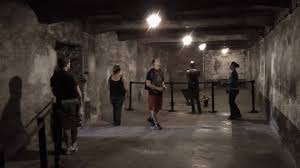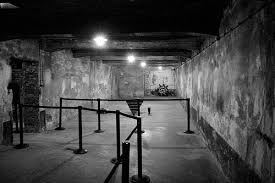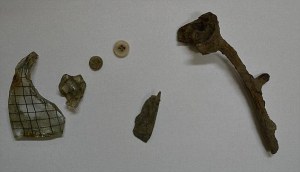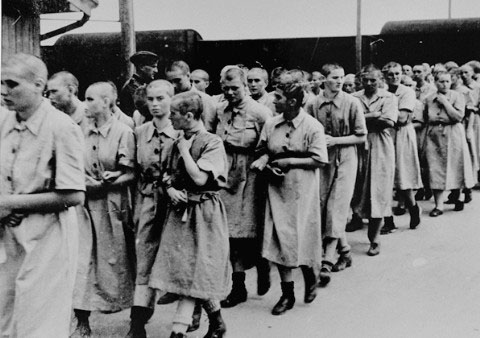One of the readers of my blog made a comment in which an old movie entitled Valkrie was mentioned. This movie came out on Christmas day in 2008.

Tom Cruise in the movie Valkrie
Unfortunately, this movie did not last long in the theaters. I think that it is because the younger generation does not care about the past. Tom Cruise did an outstanding job of acting in this movie, so it is a shame that it didn’t last long.
I saw the movie Valkrie on opening day in 2008, and then promptly wrote about it on this page of my website: http://www.scrapbookpages.com/Valkyrie.html
The following quote is the web page, cited above:
On Christmas Day 2008, two new movies with stories related to World War II opened in America. One of these movies was Valkyrie, starring Tom Cruise, which is about the attempt to kill Hitler by Claus Schenk, Graf von Stauffenberg on July 20, 1944. The other was a movie entitled The Reader, based on an autobiographical novel by German writer Bernard Schlink.
The movie Valkyrie was a big disappointment to me. It is an action movie with no human interest at all, but if you like James Bond movies, you will love Valkyrie.
The movie gets its title from Operation Valkyrie which was the code name for a plan, hatched by German Army officers, to kill Hitler and take over the German government. The word Valkyrie (Walküre) was taken from Hitler’s code name for his contingency plan to use the Replacement (Ersatzheer) soldiers stationed at Army Headquarters on Bendlerstrasse in Berlin in case of civil unrest or an attempted coup. The Army officers who were plotting to kill Hitler intended to use the Replacement Army, commanded by Colonel-General Friedrich Fromm, to take over the government after Hitler was dead.
Tom Cruise plays Claus Schenk, Graf von Stauffenberg, who volunteers for the assignment to assassinate Hitler on July 20, 1944 at his field headquarters in East Prussia. Cruise bears a remarkable physical resemblance to the real Stauffenberg, except that Stauffenberg was much taller. This is not a problem because, in the movie, Cruise is frequently photographed from a low camera angle, which makes him appear to be taller.
I thought that Tom Cruise did a great job of acting the part of Stauffenberg, although there was no occasion for him to show his famous smile. Tom accurately portrays the contempt that Stauffenberg had for the Nazis and Hitler. In the scenes with Stauffenberg’s wife, Baroness Nina von Lerchenfeld, who outranks her husband, Tom acts like an aristocrat in an arranged marriage, which is accurate. Unfortunately, Stauffenberg appears to be the same height as his wife, which is not accurate.
Most of the professional movie critics have complained about Cruise speaking English like an American instead of affecting a British or a German accent. Have they been to Germany lately? After more than 60 years of American occupation, that’s the way the Germans speak English now. In fact, I was once told by a German in the British zone of occupation that my English is easy to understand because I speak like an American, not with a British accent.
An important point that is not mentioned in the movie is that the men involved in the plot to kill Hitler and take over the government were almost all aristocrats with a von in their names, including Otto von Bismarck and Gottfried von Bismarck, the grandsons of the “Iron Chancellor.” Von means from and it is always followed by the name of the ancestral castle or estate. Stauffenberg was a count (Graf) and his ancestral home was named Stauffenberg. His wife Nina was a Baroness from an ethnic German aristocratic family in Lithuania.
The characters in the movie mispronounce Stauffenberg’s name which is inexcusable. The German er is pronounced like the English word air and the German au is pronounced like the ou in ouch.
The purpose of the assassination of Hitler was to put an end to World War II before the Soviet Army could invade Germany. At this point in time, Germany had no chance of winning the war: the Normandy invasion had recently taken place on June 6, 1944 and American troops were fighting their way across France, while the German army in the East was in retreat. The Army of the Soviet Union had just crossed the Polish border and was advancing toward Berlin.
Stauffenberg and his fellow plotters wanted to negotiate a separate peace with the Western allies to save Germany from complete destruction. Hitler had already made several attempts to negotiate peace, allegedly even sending his deputy Rudolf Hess on a peace mission to meet with the British on May 10, 1941, but Winston Churchill had instructed his Foreign Office on January 20, 1941 to ignore any peace offers from Germany. Hitler’s government was not acceptable to Churchill and Roosevelt, who were both upper class aristocrats, living in a completely different world than Hitler, the “people’s Chancellor.”
In January 1943, President Franklin D. Roosevelt had announced at a conference in Casablanca that only unconditional surrender by the Germans would be acceptable to the Allies. Stauffenberg thought that Roosevelt and Churchill would be willing to negotiate with his band of aristocrats after Hitler was eliminated. However, none of this is explained in the movie.
The plotters were mainly officers in the regular German army, called the Wehrmacht. Germany also had another army, called the SS, which was commanded by Reichsführer-SS Heinrich Himmler. The Waffen-SS, an elite volunteer army that was loyal to Hitler, was the equivalent of the Roman Praetorian guard. Another unit of the SS served as concentration camp guards.
The plot to kill Hitler was known as “the Conspiracy” by the thousands of people who were involved. When the plot failed, there were 5,000 people arrested. There were many other low-level clerks involved in the conspiracy, who were never identified.
Hitler was the first common man to become the leader of Germany. For thousands of years, the Germans had been ruled by royalty until November 9, 1918 when the Kaiser was overthrown by a small band of Social Democrats in a “bloodless revolution.” The German aristocrats had a hard time accepting Hitler, who was an Austrian high school dropout of low class ancestry. The previous Chancellor of Germany in 1932 was Franz von Papen, a member of the nobility, and the German president was Paul von Hindenburg, an aristocrat who was a German general in World War I. German generals were traditionally aristocrats, but Hitler had allowed common men to become high ranking army officers for the first time.
In Hitler’s Germany, class distinctions were eliminated. Workers marched in parades carrying a shovel over their shoulder, right behind the soldiers who were carrying rifles. Everyone had to work, including the aristocrats. Hitler called the German people the “Herrenvolk.” Herren means aristocratic when used as an adjective, and volk means both folk and nation.
By April 1944, Heinrich Himmler, the number two man in Nazi Germany, was also trying to negotiate with the Allies. In June 1944, Himmler had made an unsuccessful attempt to contact the British with an offer of peace; some people suspected that Himmler knew about the assassination plot, and that he let it happen because he wanted to take Hitler’s place as the leader of Germany. None of these facts are pointed out in the movie.
Hitler’s Wehrmacht generals had been plotting against him since 1938. Hitler temporarily won them over by giving them money and property. After World War I, the Treaty of Versailles limited the German military to 100,000 men. When Hitler became the Chancellor of Germany in 1933, the German Army was secretly expanded and the soldiers secretly trained in the Soviet Union. So, from the very beginning, there was secret plotting going on, sometimes with Hitler’s knowledge and sometimes not.
The plot to kill Hitler and set up a new regime had been in the works since 1941, long before Stauffenberg, a Colonel in the Wehrmacht, joined the traitors in 1943 after becoming disillusioned while fighting on the Eastern front.
The movie opens with a scene in North Africa in which Stauffenberg is writing in his journal; he deplores the way the war is being fought by the Waffen-SS soldiers on the Eastern front in the Soviet Union. Stauffenberg is a Bavarian Catholic whose family history dates back to 1250. He thinks that the Germans should fight like gentlemen in the East. Instead, the German Waffen-SS soldiers are killing Russian partisans who are fighting illegally, while the men in the Einsatzgruppen, who followed the soldiers into the Soviet Union, are shooting the Communist Commissars and members of the NKVD, which is the equivalent of the German Gestapo, as well as Jewish women and children. This is total war, with neither side following the Geneva Convention, although, according to the Germans, the crimes of the Soviet soldiers were far worse. Of course, none of this is mentioned in the movie.
Audiences are led to believe that Stauffenberg and his band of traitors must kill Hitler in order to stop “the greatest evil ever known,” which most people will assume is a reference to the Holocaust. However, the first concentration camp (Majdanek) was not liberated until July 22, 1944, three days after the attempted assassination, so there was as yet no proof that millions of Jews were being gassed, although the BBC had been broadcasting news of the gas chambers since June 1942.
One of the big problems with the movie is that it is hard to identify the participants in the plot. Throughout the movie, the date and location of the scenes are shown on the screen, but some of the minor characters are not identified. Unless there is some reason for their names to be mentioned by one of the characters in the movie, we don’t know who is who. Some of the players, such as Josef Goebbels, can be identified by the actor’s resemblance to the actual person, but this is not always the case, and the audience cannot be expected to know the names of the conspirators and Hitler’s henchmen.
For example, the man who comes to arrest Joseph Goebbels in his Berlin office is Otto Ernst Remer, the Commanding Officer of the Guard Battalion which is part of Hitler’s Walküre contingency plan. Goebbels has just spoken to Hitler and knows he is alive. When Remer learns that Hitler is alive, he acts to stop the plot to take over the German government. Students of the Holocaust will be familiar with Remer because he became a prominent Holocaust denier after the war and persuaded Germar Rudolf to do a forensic report on the Auschwitz gas chamber, which eventually led to Rudolf’s imprisonment. When I saw Valkyrie on Christmas Day, 99% of the audience consisted of high school and college students, who might have been interested in knowing that it was Remer who was sent to arrest Goebbels.
It would have helped if there had been a few scenes showing what was going on in the world while the plotters were making their several attempts to kill Hitler. In the scenes of Berlin, there is no bomb damage shown even though there had been vast destruction of the city by that time. Only one of the Generals is ever shown on the battlefield and there is hardly any indication that there is a war going on in Europe. We have no idea of what the middle class German civilians are doing while all the bombs are dropping on their cities, or if they have turned against Hitler. We never see any of the 5,000 low level conspirators, who are mostly aristocrats, as they try to maintain the lifestyle of the nobility in the midst of war. Just one scene showing Count Gottfried von Bismarck in his Potsdam mansion having tea with some of the aristocrats who were in on the plot would have helped immensely to explain the assassination attempt. On the other hand, the scenes involving German airplanes are spectacular; the planes look authentic.
Stauffenberg’s family lives in Wannsee, an expensive suburb of Berlin. Every time his family is shown, we see a shot of his house, taken at night, but we are not told where the house is located and what the significance of this is. Students of the Holocaust will know that Wannsee was the location of the villa where the details of the Final Solution were planned.
The movie doesn’t mention that the Hungarian Jews are being transported to the gas chambers at Auschwitz during the time that the plans to kill Hitler are being made, nor that Himmler is trying to trade Hungarian Jews for trucks (blood for goods) so that the German army can continue its hopeless attempt to defeat the Russians on the Eastern front. We don’t know that the German army is desperately trying to hold on until the American army gets to the German border, because many Germans believe that the Americans will eventually join them in fighting the Communist Soviet Union. In short, the movie provides no context at all and most of the scenes are about the actual assassination attempts. This is not history, but rather an action movie, which some people might find thrilling, but others will be bitterly disappointed.
There is virtually nothing in Valkyrie, the movie, which shows what ordinary life was like in Germany in July 1944. There are no extras playing the part of a German Fräulein wearing a dirndl; no Germans drinking beer and singing in a beer garden. There is nothing to indicate that the action is taking place in Germany. Another movie, Revolutionary Road, which was released around the same time, is authentic 1950s America, down to the smallest detail.
The only scene in Valkyrie that comes close to showing Germany as it was in 1943 is when Stauffenberg goes to Hitler’s home called the Berghof to get his signature on a document. We see the famous picture window that looks out on the Bavarian Alps. Hitler’s henchmen are gathered around him at the Berghof and Albert Speer can be identified: there is a bit player who bears a resemblance to him.
Hitler is accurately shown as a broken man, petting his dog, an Alsatian Sheppard. One bit of information that I didn’t know until I saw this movie is that Stauffenberg put in his glass eye whenever he was in the presence of Hitler. He obviously wanted Hitler to have a good opinion of him, and in the scene at the Berghof, Hitler tells him that he wishes that all his Army officers were like Stauffenberg.
In the trailers that were shown for weeks before the movie opened, there is a brief scene where someone kills a mosquito with the lit end of a cigarette. Undoubtedly, there were many people who thought that this was a cruel act committed by Hitler. As it turns out, it was a German guard at Hitler’s Wolf’s Lair headquarters in East Prussia who killed a mosquito on his arm. The Wolf’s Lair was located on swampy ground and that’s why there were mosquitoes. This scene may have been included by the film makers before they learned that Hitler didn’t smoke. In any case, the scene is totally out of context and has no relevance to the movie plot.
The web page, that is quoted above, was created on May 19, 2009
























